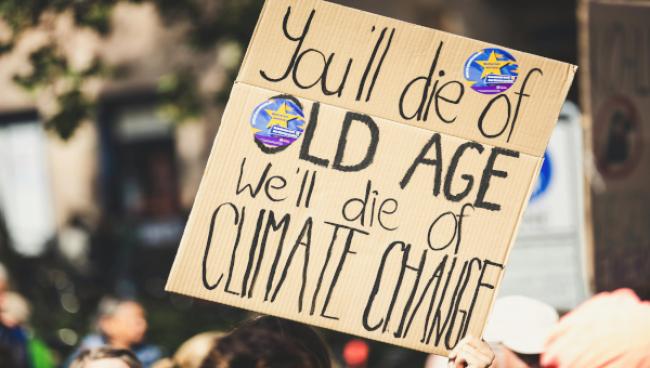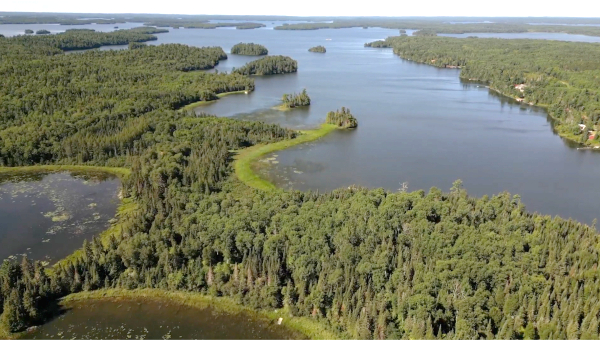Articles Menu

Aug. 6, 2025
Even in the early stages of Canada’s wildfire season, it was already clear that this year would be the second worst wildfire in Canadian history, surpassed only by the horrific and unprecedented fires of 2023. On 12 June, the CBC reported that wildfires had already consumed 3.7 million hectares, while the ten-year average for early June is only 800,000 hectares.
It is beyond dispute that the trend that had been set by June has continued unabated. The 23 July National Wildland Fire Situation Report issued by Natural Resources Canada, a federal agency, showed that on that day fires across the country covered an area roughly equal to the size of Croatia. They were raging on over 5,863,583 hectares, compared to the ten-year average of 2,488,772 hectares. Among the fires that were burning on that day, 56 were considered ‘uncontrolled’, and a further 49 were disconcertingly listed as “being held.”
On the same day, the US National Weather Service reported on the effects of wildfire smoke over a major portion of that country. It noted that smoke “from Canadian wildfires continue to spread across the skies across much of the Upper Midwest and Great Lakes. The smoke may dim the sun and create colorful sunrises and sunsets. Where the smoke is the thickest, it is reaching the surface at times, slightly reducing visibilities, and creating a burning or campfire smell. The smoke will also create air quality issues at times, mainly for sensitive groups.”
Operating under the control of the Trump administration, this agency presents the matter in the mildest terms possible, to the point of unintended humour. However, in January of this year, the Stanford Report conducted interviews with several medical experts who took a more serious view of things. One noted that the “data pretty clearly say that there is no safe level of exposure to wildfire smoke: the more exposure we get, the worse a range of health outcomes. The data also pretty clearly show that our notion of sensitive groups should probably be greatly expanded.”
Another expert added that “we estimate that wildfire smoke is about 10 times as toxic as the regular air pollution we breathe from the burning of fossil fuels. Given the toxicity of wildfire smoke and that we can expect children to be exposed to these toxic events more often, I think it’s best to err on the side of caution.” As millions of people in North America’s major urban centres now face greatly increased exposure to wildfire smoke, the threat to public health that this poses is an enormous question that can’t be disregarded or understated.
The massive scale on which Canada’s forests are burning means huge levels of destruction, a major threat to communities in the path of these fires, and considerable health risks, even for those who are hundreds of miles away from immediate danger. In addition to these considerations, however, we must add one that is even more serious. If the increased combustibility of the forests that have been generated by warmer temperatures and drier conditions is to be understood as an effect of climate change, then the increased scale of wildfires across the country has now become a cause of intensified global heating.
To get a sense of how massive a question this is, the World Resources Institute has calculated that the dreadful 2023 wildfire season in Canada “produced roughly 3 billion tons of carbon dioxide – nearly 4 times the carbon emissions of the global aviation sector in 2022.” The same body has also noted that this shocking development occurred in context where, on a global scale, “forest fires now burn twice as much tree cover as they did two decades ago.”
A 20 July CBC article informs us that “Canada is home to a quarter of the world’s peatlands – boggy wetlands that are a rich store of carbon from millions of years of decaying plant and animal life. They are burning, too. But the scale of emissions from fires in the peatlands is not accounted for in current government statistics.”
Unfortunately, a large part of this vast area is particularly vulnerable to the threat of fire. Much “of Canada’s peatlands are in the boreal forest zone, where trees like black spruce – which are prone to burning – are common. The presence of those trees, along with rich carbon deposits in the soil, can make peatlands very flammable, especially during dry periods.”
To make matters even worse, peat “fires also smoulder over longer periods, rather than going up in one giant flame. Some of these fires can burn for months or years, according to researchers, releasing large amounts of their stored carbon into the atmosphere.” Thus, the peatlands are being partly transformed from a vital carbon sink into a deadly source of carbon. This flows from a situation in which “climate change has made fire weather more frequent and severe, and those fires are worsening climate change itself.”
As a major producer of fossil fuels, Canada’s contribution to global warming is enormous and, here too, we see that the monitoring of the situation has been remarkably tardy. Researchers from McGill University in Montreal recently found that inactive “and abandoned oil and gas wells in Canada are … emitting almost seven times more methane than the official estimates.” This means that “methane emissions from these wells is about 230 kilotonnes yearly, as opposed to the government’s current estimate of 34 kilotonnes.”

The same disregard for climate consequences that has been shown in respect to previous fossil-fuel production, and its legacy is also readily apparent as the Canadian government and its provincial counterparts prepare to dramatically increase oil and gas extraction and export in the period ahead. In a previous article for Counterfire, I dealt with the frenzied drive that is underway to expand such ventures as part of an effort to make Canadian capitalism more “competitive,” in response to the trade crisis generated by the threat of Trump’s tariff measures.
As this fossil-fuel drive intensifies, we may expect an even more reckless readiness to ignore the environmental impacts and climate implications of such a course of action. By way of a stark example, the NDP government in British Columbia, supposedly on the left of the parliamentary political spectrum, has just “weakened a policy that required new liquefied natural gas (LNG) facilities in the province to produce net-zero emissions by 2030.”
The BC government will now be satisfied with “a ‘credible plan’ for the project to be ‘net-zero ready’ by the end of the decade.” Tellingly, the “amended policy does not say when the facilities would need to stop producing greenhouse-gas emissions and operate at a net-zero level,” and we may also expect an extremely forgiving interpretation of just what constitutes a “credible plan.”
The connection between such disregard for questions of environmental degradation and the threat of trade measures is readily apparent. As Business Intelligence for BC eagerly points out, proponents “of LNG say gas exports will continue to bolster B.C.’s economy for years to come, and are especially important in lieu of the US tariff war.”
When we look at the international situation, we may very justifiably be appalled by the harsh climate denialism coming from the Trump administration. It is clear, however, that liberal and social-democratic governments have no viable alternative to Trump’s approach. Canada’s federal government and a number of its provincial governments reflect this reality with jarring clarity.
Canada’s forests are burning on an unprecedented scale at an accelerating rate, and this disastrous process is leading to the release of catastrophic levels of carbon dioxide into the atmosphere. As this occurs, safeguards and effective monitoring are lacking, and the political leaders trample over each other in a scramble to approve oil and gas projects that can only greatly compound the disaster that is unfolding.
This obdurate refusal to address the climate crisis, as an unimaginable global catastrophe looms over us, is the clearest confirmation possible of the need for an ecosocialist perspective.1 Only mass action to halt this destructive course and the fight for a rational, just and sustainable society offer a way forward at the present moment. •
This article first published on the Counterfire website.
John Clarke is a writer and retired organizer for the Ontario Coalition Against Poverty (OCAP). Follow his tweets at @JohnClarke and blog at johnclarkeblog.com.